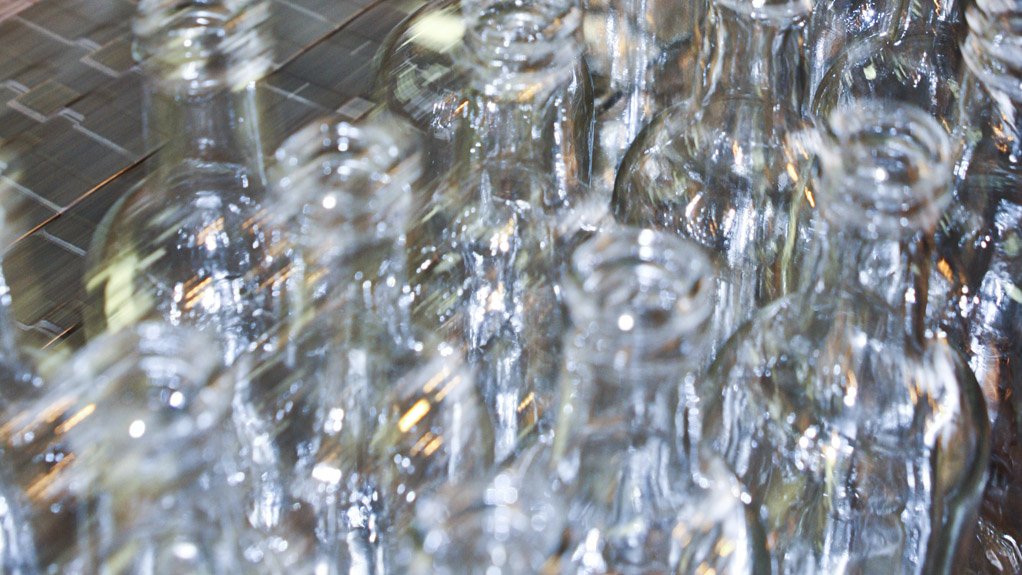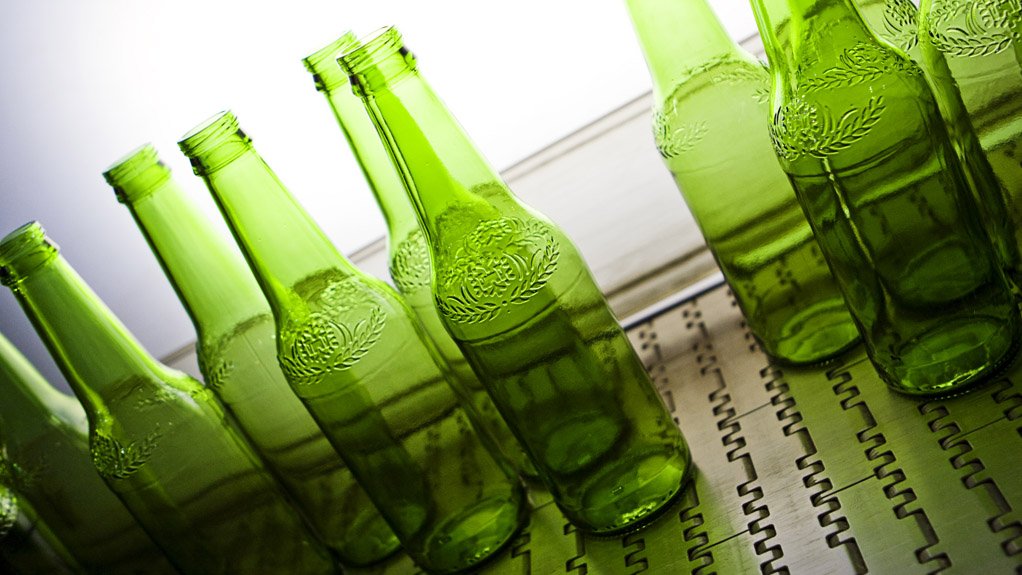Glass recycling and reuse of returnable bottles reduce glass at landfill



RETURNABLE BOTTLE SYSTEM Returnable bottles can make up to 30 trips between customers and the retailer before reaching the end of useable life
AUTOMATED GLASS-PROCESSING PLANTS Prominent glass manufacturers have invested R600-million in establishing, maintaining and upgrading automated coloured glass-processing plants
Consumption of products packed in returnable glass has increased, owing to the increased affordability of returnable packs, amid difficult economic times and lower levels of disposable income.
South Africa’s returnable-bottle system and glass recycling initiatives divert more than two-million tons of glass away from landfill every year.
The Glass Recycling Company CEO Shabeer Jhetam explains that South Africa manufactures one-million tons of glass each year; however, three-million tons of glass packaging is placed on the market yearly.
Returnable bottles can make up to 30 trips between customers and the retailer. Once these bottles are unfit for use, they are reabsorbed into the recycling system.
The success of the returnable-bottle system largely depends on the economic situation of the country and customer preference, explains Jhetam. He states that the 330 mℓ nonreturnable glass packs are regarded as more desirable and luxurious, and that people tend to move towards these packs when finances allow for them to do so. The popularity of returnable packs is inversely proportional to the level of spending by the public, which is to say that, when budgets allow, people opt for the more expensive nonreturnable packs, Jhetam explains. Conversely, when times are not as good and levels of disposable income are lower, returnable bottles become more popular, he notes.
Commenting on the efforts of glass manufacturers regarding recycling, Jhetam says prominent glass manufacturers have invested R600-million in establishing, maintaining and upgrading automated coloured-glass processing plants.
He states that these technologies make recycling easier for consumers, as they no longer have to sort glass by colour before it can be recycled. The technology used in processing plants can sort recycled glass into clear, green and amber. Owing to this, he notes, the need for three separate glass banks at recycling centres is negated and all glass can now be deposited into one bank.
Commenting on the company’s core drivers, Jhetam states that its progress has been underpinned by its desire to uplift previously disadvantaged entrepreneurs. The glass buy-back centres supported by The Glass Recycling Company provide opportunities for these entrepreneurs, as the participants involved in the buy-back centre initiative are upskilled by the company during intensive classroom and on-site training.
The training provided by the company includes logistics, finance, the general running of a business and business development. Jhetam adds that the company also goes on regular site visits to the buy-back centres, which enables further assistance and support if this is required.
The buy-back centres provide the infrastructure necessary for people to return their glass, the bulk of which is collected by glass collectors operating outside the formal industry, Jhetam states. He highlights that there are about 50 000 active glass collectors in the country.
He notes that it is part of the company’s short-term goals to assist in establishing more buy-back centres to enable more collectors from the informal sector to enter the glass recycling industry. Jhetam highlights that the company also aims to increase the number of glass banks in higher-income areas: “It is in these areas that levels of apathy regarding recycling tend to be very high.”
He states that the major driver of the company is diversion of glass away from landfill, as landfill space is finite, which makes it valuable. Using this space ultimately affects everyone, as the taxpayer has to fund this space.
Jhetam states that consumers dictate what they want. Glass has proved to be an aspirational means of packaging, owing to the purity of the substance and its being completely inert.
The transparent nature of this type of packaging is also reassuring to consumers, as they can see exactly what is inside – many people prefer glass, with premium products being packaged in the glass, he concludes.
Article Enquiry
Email Article
Save Article
Feedback
To advertise email advertising@creamermedia.co.za or click here
Comments
Press Office
Announcements
What's On
Subscribe to improve your user experience...
Option 1 (equivalent of R125 a month):
Receive a weekly copy of Creamer Media's Engineering News & Mining Weekly magazine
(print copy for those in South Africa and e-magazine for those outside of South Africa)
Receive daily email newsletters
Access to full search results
Access archive of magazine back copies
Access to Projects in Progress
Access to ONE Research Report of your choice in PDF format
Option 2 (equivalent of R375 a month):
All benefits from Option 1
PLUS
Access to Creamer Media's Research Channel Africa for ALL Research Reports, in PDF format, on various industrial and mining sectors
including Electricity; Water; Energy Transition; Hydrogen; Roads, Rail and Ports; Coal; Gold; Platinum; Battery Metals; etc.
Already a subscriber?
Forgotten your password?
Receive weekly copy of Creamer Media's Engineering News & Mining Weekly magazine (print copy for those in South Africa and e-magazine for those outside of South Africa)
➕
Recieve daily email newsletters
➕
Access to full search results
➕
Access archive of magazine back copies
➕
Access to Projects in Progress
➕
Access to ONE Research Report of your choice in PDF format
RESEARCH CHANNEL AFRICA
R4500 (equivalent of R375 a month)
SUBSCRIBEAll benefits from Option 1
➕
Access to Creamer Media's Research Channel Africa for ALL Research Reports on various industrial and mining sectors, in PDF format, including on:
Electricity
➕
Water
➕
Energy Transition
➕
Hydrogen
➕
Roads, Rail and Ports
➕
Coal
➕
Gold
➕
Platinum
➕
Battery Metals
➕
etc.
Receive all benefits from Option 1 or Option 2 delivered to numerous people at your company
➕
Multiple User names and Passwords for simultaneous log-ins
➕
Intranet integration access to all in your organisation




















